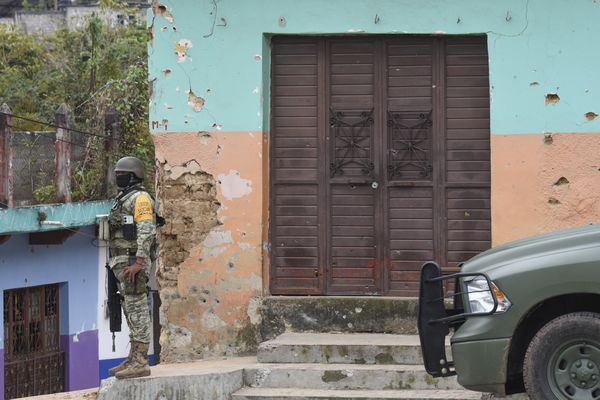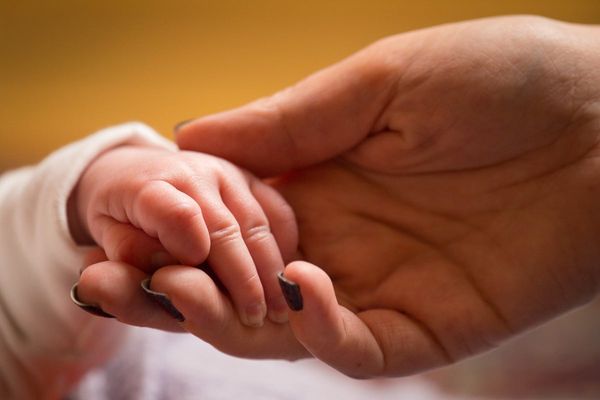
In late 2021, it came as a shock when Australia woke up to find that its government, under then-prime minister Scott Morrison, had secretly agreed to join the nuclear submarine club with old friends, the US and the UK.
The secret within that secret was that Australia would be responsible for the radioactive waste generated by its involvement in the AUKUS program. For the first time, Australia had signed up to construct a storage facility for high-grade nuclear waste, robust enough to last 1000 years.
Australia had never done it. Nor the US. Nor the UK. Was the iron-clad commitment to building a waste dump part of the deal struck by Morrison when he announced the AUKUS partnership? If so, he didn’t mention it at the time. Nor was it mentioned by US President Joe Biden, UK Prime Minister Rishi Sunak or Australian Prime Minister Anthony Albanese at the official AUKUS announcement in San Diego in March.
An official fact sheet issued jointly by the US, UK and Australia was the first time the waste facility was disclosed. Occupying one paragraph in a sea of 2000 words, it bound Australia under its commitment to “nuclear stewardship” to manage “all radioactive waste generated through its nuclear-powered submarine program, including spent nuclear fuel, in Australia”.
So if not by Morrison, was the nuclear dump somehow slipped into the agreement developed by the Albanese government after it came to office? Either way, nuclear proponents had scored a major victory, and without an ounce of blood lost via any pesky parliamentary debate or, say, a commission of inquiry. Either Morrison or Albanese — perhaps both — had obliged.
Amid internal pressure from the left wing of the ALP, Albanese is now reportedly moving to shut down any debate on the AUKUS deal at the party’s upcoming annual conference.
But how much nuclear waste does this agreement involve? And is it elastic enough to include other US and UK nuclear waste? And then there’s the cost. It would appear this has not been included in the AUKUS agreement’s $360 billion budget over 30 years.
Crikey was prepared to have a go at a back-of-the-envelope calculation, but it’s not easy given that a dump for this kind of waste has never been built — either by the US or the UK. Both countries have had nuclear submarines for decades, yet neither has worked out a permanent solution for the high-grade nuclear waste produced by submarines.
That particularly nasty challenge has been left to Australia, apparently as part of the price of entry to the AUKUS agreement.
The near example of South Australia
In 2016, a royal commission in South Australia made a stab at calculating the cost of establishing a storage facility for radioactive waste. It was part of a push for the state to build an industry as an international nuclear waste dump.
A specialist consulting firm estimated the cost of the construction, decommissioning and closure of the facility to be about $41 billion. This included a new port, road, rail, airport and other infrastructure for what would be a remote location. Total operating costs — including labour, contracted services, maintenance and equipment — were estimated at $877.7 million a year in the first 40 years and $765.2 million after that. This produced a total capital and operating cost estimated to be $145.3 billion over the 120-year life of the project.
Two international firms with a long record in the nuclear industry, Jacobs and MCM, calculated the figures. But a citizens jury, which was empanelled as part of the royal commission process, questioned the bona fides of the costing.
“The economic modelling has a number of flaws, including not accounting for negative externalities or opportunity costs, compared to other potential investments, and relies on a very optimistic interest rate,” the jury concluded.
Professor Ian Lowe, who was on the expert advisory committee for the SA Nuclear Fuel Cycle Royal Commission, said the Jacobs and MCM calculation was not directly comparable with the cost of an AUKUS nuclear dump, whatever that might be.
“The costing covered a large operation that would have taken in the waste from nuclear power programs in Japan, South Korea and possibly Taiwan,” he told Crikey.
Lowe also pointed to differences in the grade of uranium: “Nuclear submarines don’t use the slightly enriched uranium which fuels power stations, but highly enriched weapons-grade material, typically over 90% uranium-235.
“As a result, the waste consists of a more complicated and more intractable set of isotopes. So it is not clear whether the storage system similar to the one assumed by the SA royal commission would be adequate to deal with the waste from nuclear submarines.”
The far example of Finland
Finland has been building a repository 450m underground on an island off its south-west coast, designed to handle the spent nuclear fuel produced by the country’s nuclear power industry. The search for a site began in 1983 and is due to open this year. According to Lowe, the estimated cost will be around €3.5 billion, about A$5 billion.
“The Finnish repository, like the paper exercise conducted for the SA royal commission, deals with the radioactive waste from nuclear power stations,” he cautioned. “Because neither the USA nor the UK has yet dealt with the weapons-grade waste of nuclear submarines, we can’t be sure that we know what will be involved.”
The long-ago example of WA
In the late 1990s, a company called Pangea Resources Australia, which was 80% owned by the British government, set out to convince the Western Australian and federal governments to back the construction of an international waste dump in remote parts of the state.
The project came with the promise of 70,000 jobs and a reported construction plus infrastructure cost (with few details) of $9 billion (in 1999 values). Operating costs were estimated to be around $650 million a year.
It sank when it failed to gain the backing of the Howard government. But Pangea arguably laid the foundations for Australia’s agreement to build a nuclear dump under the AUKUS agreement.
Let the games begin
Behind the scenes, the government has been moving on setting up an AUKUS bureaucracy. The Australian Submarine Agency (ASA) has been established with some 350 staff. This is likely to double over the next 12 months. The ASA’s inaugural director-general is Vice-Admiral John Mead, a near 40-year veteran of the Australian Navy.
The agency might be new, but it appears old defence habits die hard when it comes to answering direct questions. Crikey sought answers on the likely cost of constructing a radioactive waste dump but the agency would not be drawn.
An ASA spokesperson did say that the waste would be stored on “the current or future defence estate” and that Australia “will not be responsible for disposing of spent nuclear fuel or other high-level waste from other countries”.
At the same time, the agency added the key claim that the UK and US had “a long history” of “safely and securely” managing radioactive material produced by their own programs “in a way that has no harmful impact on local populations or the environment”.
But is that the whole story? Not really.
According to Lowe, neither the UK nor the US has moved beyond temporary storage. The UK is still at the community consultation stage of a plan to permanently store waste from decommissioned nuclear submarines. And in the US, nuclear waste from military and civilian sources is “just piling up”, he has said, with no long-term solution in sight — a position unchanged since 2011 when the Obama administration halted construction on a deep geological disposal facility in Yucca Mountain, Nevada, in the face of public and political opposition.
The ASA also said in its emailed response that Australia had “safely and securely managed radioactive waste in Australia for decades”. This probably refers to the lower-level waste from the Lucas Heights nuclear reactor in Sydney, as well as radioactive waste stored in hospitals and universities.
Yet this ignores that only last week a court decision dashed federal government attempts to build a nuclear waste dump for this waste at Kimba, South Australia. The Federal Court decision upheld objections from the local Barngarla Determination Aboriginal Corporation, underlining the practical difficulty of gaining community acceptance for new nuclear facilities.
Government responds with silence
Crikey asked Defence Minister Richard Marles and Albanese to put a figure on the cost of building a dump and whether or not Australia might end up dealing with waste from the UK and the US.
We also asked Marles’ and Albanese’s offices, as well as former prime minister Scott Morrison, to answer the question of exactly when Australia committed to building a nuclear waste facility. Did this occur under Morrison or during the Albanese government’s negotiations with the US and UK governments?
We received no response.
Should the government be forced to disclose the expenses of building nuclear waste facilities in Australia? Let us know by writing to letters@crikey.com.au. Please include your full name to be considered for publication. We reserve the right to edit for length and clarity.







